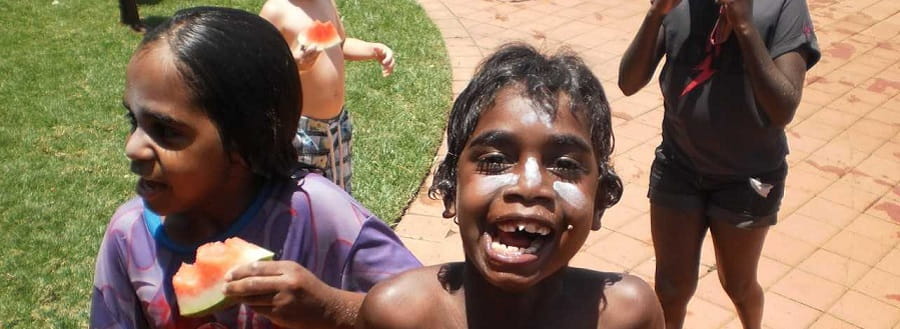
Aboriginal children are at a much greater risk of drowning than non-Aboriginal children, and this risk is even greater in regional and remote areas of WA. In addition, Aboriginal Australians have higher rates of poor health as a result of a number of factors including physical inactivity and poor nutrition.
The Go for 2&5 program was created to support vulnerable and at-risk communities by addressing the over-representation of Aboriginal children in drowning statistics. The program also aims to contribute towards improving health gaps between Aboriginal and non-Aboriginal Australians through increasing physical activity and nutrition, by providing fruit as an incentive for swimming laps and/or participating in aquatic physical activity.
Our Research
This research aimed to evaluate the Go for 2&5 program to examine the barriers and enablers to participation and its effectiveness in improving levels of physical activity, swimming skill development and overall consumption of fruit at pools in the Pilbara region to guide future programming and expansion of the program. Specifically it looked to address the following research questions:
-
Has participating in the Go for 2&5 program improved physical activity levels in participants?
- Has the Go for 2&5 program improved swimming skills in participants?
- Has the Go for 2&5 program increased consumption and the availability of fruit among participants?
- What are the barriers and enablers to participation in the program?
Key factors found to enable participation in the program included: flexible programming, ensuring that the program is run by local community members, that rewards offered to encourage participation are valued by participants, creating a fun and safe environment, and community wide promotion of the program.
Key barriers to program participation included: children having other interests and/or commitments within the community, lack of transport to and from the pool, being too young to attend the pool without adult supervision, not knowing about the program, and injury.
You can download the full report at the link below.
